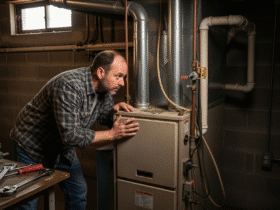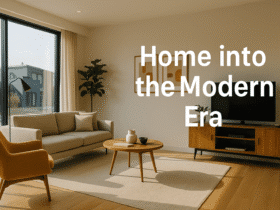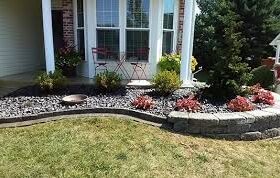Flooring is an essential factor when building and renovating a house. For several people, the best choice is a floor with lavish minerals and gemstones, but concrete is a preferred option for a simple, stylish, and functional floor.
People have developed various concrete floor types; the most common one in homes is exposed aggregate which you will learn about in this article. Here are some reasons why you should use exposed aggregate and concrete flooring for your home.
Benefits Of Using Exposed Aggregate Concrete Floors
Several homeowners overlook concrete floors as they associate them with dull places. However, architects and interior designers have rediscovered why concrete is a popular material.
1. Concrete floors are low maintenance
Cleaning is an essential aspect to consider when choosing a flooring material. Concrete doesn’t require much maintenance, and homeowners can clean it using a mop and soapy water.
Weekly cleaning is enough to keep these floors shiny, so owners don’t have to spend much money on materials.
2. Homeowners have more choices
Most people think of dull grey stone when they imagine concrete, but this versatile material has several finishes to complement your house.
Exposed aggregate is a popular finishing choice for concrete floors. This material gives a textured look to the floor that enhances plain concrete.
3. Concrete floors are durable
Concrete floors can last homeowners several years with proper care and maintenance. Regular cleaning will leave a shiny surface that looks attractive and vibrant.
4. People can recycle concrete floors
Concrete is one of the most environmentally-friendly materials people can use for flooring. Manufacturers typically make their slabs from existing concrete, so there is no wastage or use of new materials.
What Is Exposed Aggregate?
Four components make high-quality concrete; water, cement, fine aggregate (sand), and coarse aggregate (gravel). People develop exposed aggregate concrete by removing the top layer to expose the sand and gravel.
These exposed aggregates create texture and design on the floor that several homeowners prefer. These concrete slabs complement all the rooms in the house.
How To Make Exposed Aggregate
The typical way to create exposed aggregate is to scrape off the cement paste’s outer layer. This action will reveal the hidden stones and gravel to create a lovely concrete slab.
There are three primary methods to remove the concrete’s outer layer:
- Surface retardant application
- Abrasive blasting like sandblasting or shot blasting
- Brushing and washing with a broom
Types Of Exposed Aggregate
- Homeowners can also choose various exposed aggregate styles:
- The standard method is where manufacturers mix the aggregates in a concrete plant.
- The polished method creates shiny floors popular in residential areas.
- The seeded process where owners can customize the designs on their aggregates.
- The topping approach helps improve the appearance of the concrete overlay.
The Best Rooms For Concrete Flooring
Concrete flooring and exposed aggregate can complement any room in the house, but some areas work best with this flooring material.
1. The bathroom
Concrete floors give the bathrooms a spa-like feel that helps the area look relaxing and welcoming. It also creates the impression of a large bathroom.
2. The kitchen and dining area
These rooms look sophisticated with concrete flooring. They make the house look pleasing for guests and provide an ambience during meals and group pictures.
3. The home office
People need a relaxing environment to finish work properly; that’s why several people choose concrete flooring for their home office. It helps people feel motivated about their work, and it gives a stylish feel to an otherwise drab office space.
4. The bedroom
This room may be the most unexpected area where concrete floors belong. Manufacturers develop several patterns and colours for this material, so you will find the design that best fits your room.
You can even find concrete flooring patterns with leaves, flowers, and other geometrical shapes to give a bedroom life. This concrete is a versatile and sturdy material that fits any bedroom aesthetic.
Concrete Flooring Finishes
People have two options when they have a concrete floor; they can choose plain slabs or apply a finish to the material. A concrete finish smooths the concrete surface using a screed or trowel.
Finishes give a refined look to concrete floors, and they are easier to customize for your home. There are several ways to finish a concrete surface:
1. Polishing
People use this method to replicate pricey stones like marble or granite for a cheaper price. Homeowners can easily transform dull concrete into stylish stone.
2. Stained flooring
This method creates a coloured effect in the concrete slabs, so there is more texture. Most people choose brown or grey stains, but other colours, like blue and red, can also complement the concrete.
3. Painted concrete
You can use epoxy to create custom decorations on your concrete floor. This paint makes the material more durable, so it’s ideal for high foot-traffic areas.
4. Acid-stained flooring
Acid staining is an adventurous method that uses phosphoric or hydrochloric acids with salts to create a stained design on the concrete. This reaction creates unique colour designs and patterns
These finishing methods help to create beautiful concrete floors that suit any home design.
Conclusion
People usually consider concrete a cheap material; that’s why you wouldn’t think to use it for your floors. However, now more people realize how helpful this versatile and sturdy material is for construction.
You can create lovely designs and mimic expensive stones for half the price. Concrete is a rising star for flooring materials in the construction world.











